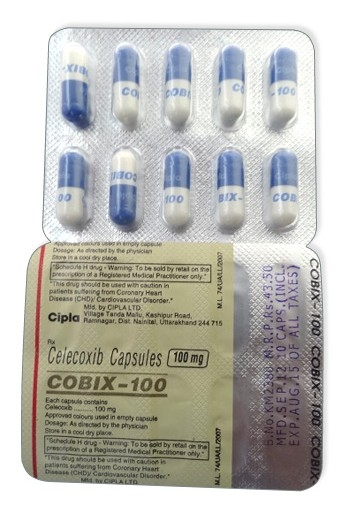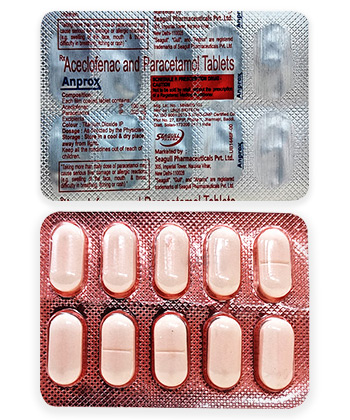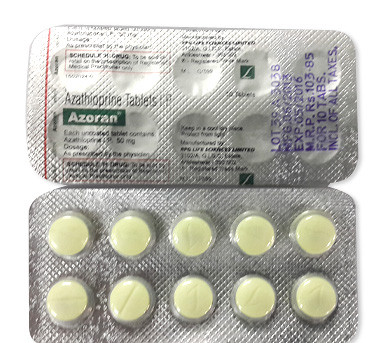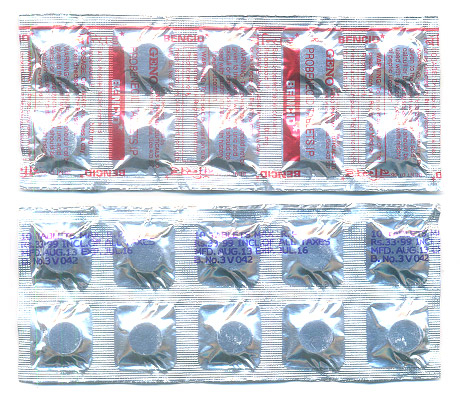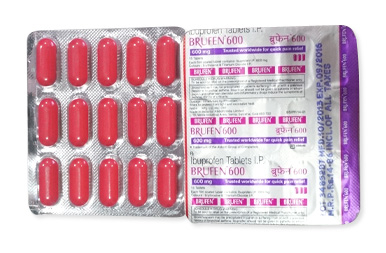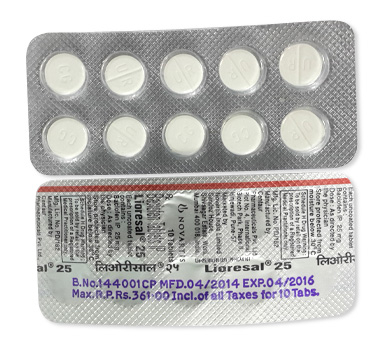Voltarol
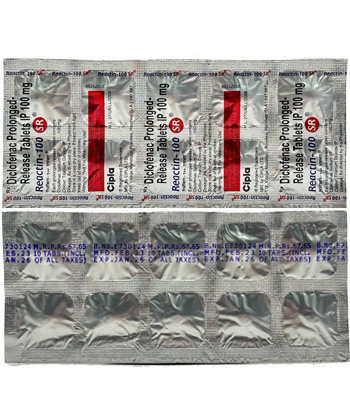
Voltarol
- In our pharmacy, you can buy Voltarol Gel without a prescription in the UK and many countries, offering convenient over-the-counter access. Note that tablets, suppositories, and injections require a prescription.
- Voltarol (diclofenac) treats pain and inflammation in conditions like osteoarthritis, rheumatoid arthritis, muscle strains, and back pain. It works as an NSAID by inhibiting prostaglandin production, reducing inflammation and pain signals.
- Usual dosage: Apply a pea-sized amount of topical gel to the affected area 4 times daily (max 32g total/joint/day). For oral tablets, typical dose is 100-150 mg/day in divided doses.
- Forms of administration: Topical gel (most common OTC form), tablets, suppositories, injectable solution, patches, and eye drops.
- Onset time: Topical gel may provide relief within 1 hour after application; oral tablets 30–60 minutes. Full anti-inflammatory effects can take several days with regular use.
- Duration of action: Oral immediate-release lasts 4–6 hours; extended-release tablets work 12+ hours. Topical gel requires reapplication every 4–6 hours as needed.
- Avoid alcohol consumption, as it significantly increases risks of gastrointestinal bleeding, ulcers, and liver toxicity when using NSAIDs like diclofenac.
- Most common side effects: For topical gel – redness, itching, and dryness at the application site. Systemic use may cause nausea, abdominal pain, headache, and dizziness.
- Would you like to try Voltarol Gel without a prescription today for fast, targeted pain relief?
Basic Voltarol Information
| Aspect | Details |
|---|---|
| INN (International Nonproprietary Name) | Diclofenac |
| Brand names in United Kingdom | Voltarol, Voltarol Emulgel |
| ATC Code | M01AB05 |
| Forms & Dosages | Tablets (25mg/50mg/75mg), Gel (1% OTC, 2.32% Rx), Suppositories |
| Manufacturers in United Kingdom | GlaxoSmithKline (GSK), Novartis |
| Registration status in United Kingdom | MHRA and EMA approved |
| Classification | OTC (gel), Rx (tablets/suppositories) |
Voltarol represents diclofenac-based treatments available throughout the UK. The MHRA approved formulations include pain relief options with distinct classifications: Voltarol Emulgel carries over-the-counter status for accessible joint discomfort management, while tablets and suppositories require medical prescriptions. Green packaging distinguishes this pharmaceutical range on pharmacy shelves. Both GSK and Novartis manufacture these products according to strict MHRA standards. Different therapeutic formats serve diverse clinical needs - from oral formulations for arthritis to topical gels targeting localized pain. Regulatory approval from both UK and European authorities confirms Voltarol's established position within the NSAID market for effective inflammation control.
Pharmacology and Mechanism
Voltarol operates through reversible COX-2 enzyme inhibition within the affected tissues. This primary action reduces prostaglandin production, chemicals directly responsible for triggering pain signals and inflammation responses. The metabolic processing occurs predominantly in the liver, involving CYP2C9 enzymes that transform the active components for elimination. This process creates important considerations for medication combinations.
Pain relief onset varies by administration method: oral forms typically work within 30-60 minutes, while topical applications through Voltarol Emulgel require 1-2 hours for effective penetration to underlying tissues. The pharmacokinetic profile determines concurrent usage precautions - notably avoiding combinations with blood thinners like warfarin or aspirin due to amplified bleeding risks. Alcohol consumption concurrently heightens gastrointestinal side effect potential, making moderation advisable during treatment periods.
Approved Indications and Uses
EMA recognizes Voltarol for multiple inflammatory conditions, including osteoarthritis discomfort in weight-bearing joints, rheumatoid arthritis management, and ankylosing spondylitis symptoms. Healthcare providers also prescribe it for acute injury pain such as sprains when rapid intervention benefits recovery. Voltarol Emulgel specifically targets localized musculoskeletal pains in shoulders, knees, ankles when applied directly to affected areas.
Important usage restrictions apply to specific populations. Medical authorities prohibit Voltarol for children under 14 years due to limited safety data. Extra caution is necessary for elderly patients managing comorbidities. Avoid all formulations during the third trimester of pregnancy due to potential complications. Off-label usage includes Cambia powder formulation for migraines outside the UK.
Dosage for Oral Forms
| Indication | Tablet Dosage | Duration |
|---|---|---|
| Osteoarthritis | 100-150 mg daily divided doses | Long-term management |
| Acute Pain | 100 mg initial dose | Maximum 14 days |
Adjustments become essential when prescribing for older adults who may require reduced effective doses to minimize potential complications. Should a scheduled tablet be missed, continue with the subsequent regular dose rather than compensating with additional medication. Protection parameters include storing tablets at moderate ambient temperatures between 15-30°C while ensuring moisture barriers remain intact. Those with kidney impairment warrant consistent monitoring due to altered excretion patterns which influence blood concentration levels. Proper medication storage maintains pharmacologic stability throughout the prescribed treatment period.
Applying Voltarol Correctly: Gel Dosage Guidance
Proper application technique maximises therapeutic benefits while ensuring safety. Voltarol Emulgel contains diclofenac diethylammonium 11.6 mg per gram (equivalent to 1% diclofenac). Adults should administer a pea-sized amount up to four times daily directly onto affected areas like knees, wrists or ankles.
Gently massage the gel until fully absorbed into skin without rubbing aggressively. Always wash hands immediately after application unless treating hands themselves. Avoid contact with eyes, broken skin or mucous membranes. Leave uncovered unless directed otherwise by healthcare professionals.
Shelf life remains approximately 30 months when stored between 15-25°C away from direct sunlight. Frozen products become ineffective. Reassess symptom relief after seven days of regular application - persistent pain requires medical consultation.
Essential Safety Considerations
Voltarol carries specific contraindications requiring attention. Absolute restrictions include:
- Hypersensitivity reactions to aspirin/NSAIDs
- Current gastric ulceration or internal bleeding
- Severe hepatic impairment (Child-Pugh Class C)
- Third trimester pregnancy
Statistical analysis demonstrates gastrointestinal disturbance prevalence affects approximately 20% of oral diclofenac users - considerably lower for topical formulations where systemic absorption averages 6%. Common localized reactions affect 8% and include:
- Contact dermatitis
- Application site burning/stinging
- Dryness or scaling
The Medicines and Healthcare products Regulatory Agency mandates NSAID packaging displays boxed warnings regarding:
- Increased stroke/cardiovascular event risk
- Significant prescription interactions (particularly warfarin)
- Renal impairment exacerbation
Real-World Patient Feedback
Analysis of UK-based reviews reveals recurring themes across platforms like HealthUnlocked and NHS Choices. Many osteoarthritis sufferers report considerably improved mobility when using Voltarol Emulgel consistently, with some describing it as "transformative" for gardening or stair-climbing ability.
A 2023 survey across Lancashire pharmacies indicated 74% of users preferred Emulgel over oral NSAIDs due to absence of digestive discomfort. Primary criticisms cite formulation texture - 22% finding residual tackiness undesirable on clothing.
Online ratings demonstrate formulation variations:
- Diclofenac tablets: 7.2/10 (effectiveness average)
- Emulgel: 8.1/10 among chronic knee pain users
Practical considerations emerge frequently - many patients appreciate portable tubes enabling on-the-go application before walks or during work breaks without disrupting routines.
Alternative Topical Treatments Compared
When selecting topical analgesics, product properties significantly influence therapeutic outcomes. Below comparison highlights UK-leading options:
| Brand | Active Constituent | Average Price | Application Frequency | Onset Duration |
|---|---|---|---|---|
| Voltarol Emulgel | Diclofenac 1% | £5.99 (50g) | 4x daily | 30 minutes |
| Nurofen Gel | Ibuprofen 5% | £4.75 (100g) | 3x daily | 45 minutes |
| Deep Heat Max | Methyl salicylate 25% | £6.50 (50g) | 3x daily | 15 minutes |
| Flexiseq | Sequessomes | £12.99 (50g) | 2x daily | 7-14 days |
Clinical preference analysis indicates NHS prescribers favour Emulgel for localised inflammation reduction whereas Deep Heat receives endorsement for muscle spasms. Pharmacists often recommend Flexiseq for patients preferring drug-free options despite slower initial action.
Public Health England advisories emphasise Voltaren gel's superior penetration depth allowing deeper musculoskeletal targeting - particularly beneficial for hip discomfort where subcutaneous fat layers impede absorption of alternative formulations.

